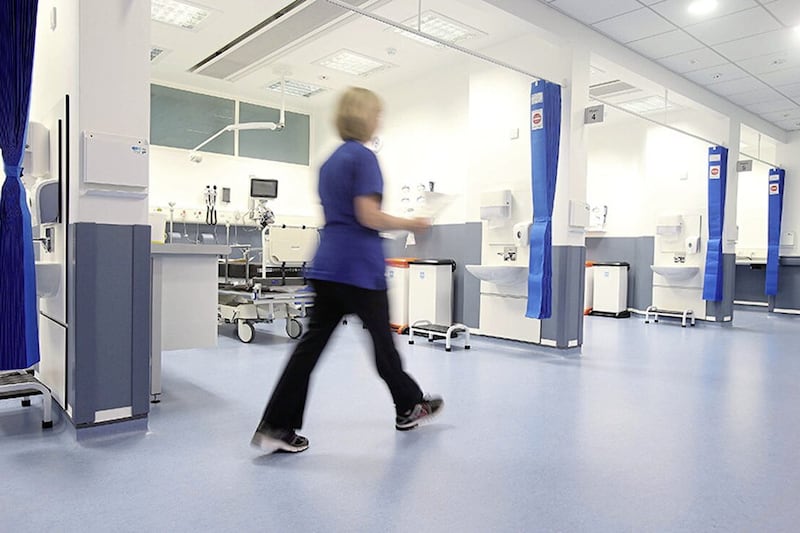AS I look back on 2022, it is hard to imagine just how much the economic landscape has changed in 12 months.
This time last year, I was looking forward to seeing the ‘transitory’ inflation brought about by supply chain bottlenecks and our rampant demand after being released back into the wild ebb away.
I definitely wasn’t expecting nine consecutive rate rises from the Bank of England as they use interest rate increases to tackle the inflation that has largely been brought about by the Russian invasion of Ukraine.
All that has happened over the past 12 months looks set to conspire to deliver a recession in 2023.
Believe it or not, the most significant economic event in the past 12 months for me was not the UK’s chaotic and short-lived Truss premiership, but rather the break out story that the Northern Ireland public finances are in particularly dire straits.
The size of the funding ‘black hole’ here was estimated at £650 million. There is some reprieve from a budget crisis, but without an Executive in place, we could be in for some sharper budgetary pain from the Secretary of State. It seems that water charges are back on the table.
It isn’t as if we are spending more than we have because we are delivering Class A services. Far from it.
In fact, I’m increasingly concerned about the state of our public services, particularly our health service, having had need of it in recent weeks.
Yes, I was one of those ‘accidents in the home increase at Christmas’ statistics. As I went up my attic ladder for the Christmas decorations it collapsed, which led me to accident & emergency on a Sunday evening to join 120 other people waiting to be seen.
If you want to see a system under pressure, that was it.
This is the front line of medical care and people seem to be turning to it because the rest of the system is creaking. I heard one person checking in to see if they could wait around and get a procedure because they are 400th on a waiting list. We can scoff at the cheek of trying to treat A&E as a drive-through for routine procedures, but that’s an act of pure exasperation.
Our health service is under extreme pressure and we are doing the people who work in it, and the people who really need it, a disservice.
We have had the plan to solve a lot of this for some time. The ‘Systems, not structures – Changing health and social care’ report, which has become known as the Bengoa report, was published in 2016.
As that report said: “If we do not change the way we provide health and social care, the situation will only continue to get worse – the demand will continue to increase, activity will remain static and waiting times will continue to lengthen.”
Professor Bengoa came back to Northern Ireland in 2019 and spoke at an event where he reiterated the need for change and the courage required to achieve it. And yet, here we are, heading into 2023 with a health service that is creaking under the strain of demand placed upon it and the lack of action to make the necessary changes.
Beyond Bengoa, we know from work by the Northern Ireland Fiscal Council and the Nuffield Trust last year that our health system is less efficient than in England. Nuffield found that hospital costs that can be compared on a like for like basis such as for in-patients, out-patients and day cases were £410m higher than in England.
Even more worryingly, people in Northern Ireland do spend more of their life in ill health, on average, than in England. This is bad for those concerned and it is bad for the economy.
There is a difficult conundrum to solve here. Demands for pay increases are getting louder and public finances are ‘stretched’.
Given this, I keep reading how public sector pay rises are unaffordable. What I don’t hear so much of is how pay increases will cycle their way around the economy in a positive way. First up, the pay increases will invariably be taxable and subject to national insurance.
So let’s take an example where a pay award costs £100m. Assuming income tax of 20 per cent plus employee national insurance, there is £32m flowing straight back to the Treasury. Employer national insurance raises almost another £14m. Once the money is in people’s pockets more than 90 per cent of it will be spent – savings ratios are low, especially as costs has been soaring.
That spending generates VAT revenues (not on all goods and services, I know) for the government and supports other people’s wages in sectors like retail, hospitality and other services, who in turn pay tax and national insurance.
This virtuous cycle goes on and on and on to the point where the vast majority of the £100m outlay is back in Treasury’s coffers.
So, as we consider the conundrum of how we deliver better public services, how we attract people to work in them and how much we pay people to deliver them, next time you are told that public sector pay increases are unaffordable, maybe we can start a more nuanced conversation and consider how we can deliver better services, and whether we can afford not to increase wages?
Andrew Webb is chief economist at Grant Thornton









